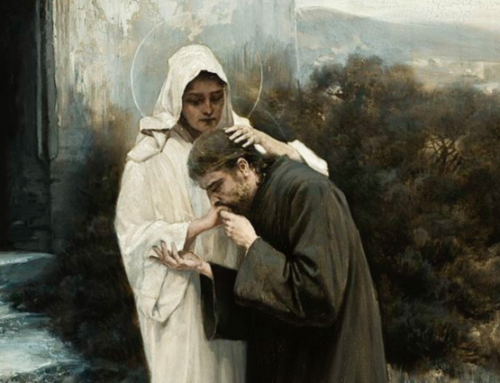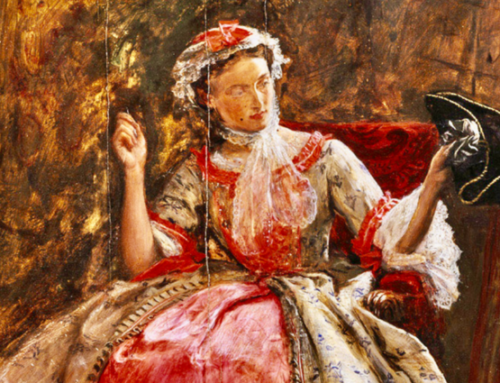If you’re looking for a Christmas gift that fits in perfectly with the time of year, look no farther. In “Holly Jolly,” Mark Voger, the master of all things nostalgic, examines the rise of Christmas as a cultural artifact and phenomena, from the 1930s through the late 1980s.
Holly Jolly: Celebrating Christmas in Pop Culture, Mark Voger (192 pages, TwoMorrows Publishing, 2020).
 I’ve been a fan of Mark Voger’s works on popular culture for well over a decade (and a half) now, and I always look with enthusiasm to his next venture. This one, Holly Jolly, is a thing of beauty, and I was especially eager to read it when I first learned it was coming out this season. When it arrived, a week or so ago, at the Birzer house, my kids and I immediately devoured it—the writing, the layout, the images, the nostalgia. All, pretty much perfect.
I’ve been a fan of Mark Voger’s works on popular culture for well over a decade (and a half) now, and I always look with enthusiasm to his next venture. This one, Holly Jolly, is a thing of beauty, and I was especially eager to read it when I first learned it was coming out this season. When it arrived, a week or so ago, at the Birzer house, my kids and I immediately devoured it—the writing, the layout, the images, the nostalgia. All, pretty much perfect.
With Holly Jolly, Mr. Voger fully examines the rise of Christmas as a cultural artifact and phenomena, looking intensely at the time period of the mid-twentieth century, from the 1930s through the late 1980s. As he notes, Christmas permeated every aspect of culture in those years: “Paintings, etchings, stained-glass windows, sculpture, hymns, poems, songs, books, plays, decorations, movies, greeting cards, TV, food, drink, cartoons, candy and toys. Did I mention cartoons, cookies, candy, and toys?” Not limited to the twentieth century, though, Mr. Voger offers a solid timeline, running from 4BC to 1992AD, and some of his examples even reach as far as 2017.
After all, what would Christmas in the twentieth century be without Jesus, St. Nicholas, the Christmas tree, and Charles Dickens? Mr. Voger gives his proper due to each of these in the book.
As just noted, then, a focus on the twentieth century should not suggest that Christmas has left Christ behind. “The fact that there were ‘two’ kinds of Christmases—the Santa Claus kind and the Baby Jesus kind—was a bit confusing,” to the young Voger, and of course, to all our younger selves. Indeed, Mr. Voger—though he calls himself somewhat humorously a “kind-of-secular-humanist-devout-lapsed-Catholic-with-agnostic-leanings”—remembers fondly (well, for the most part) his Catholic schooling and his Catholic upbringing in a large Irish household. As he poignantly notes throughout the book, the tension between the religious tradition of Christmas and the cultural tension of popular Christmas is a real one, especially as even non-Christians have embraced the holiday, taking from it the gift giving as well as the sense of peace that comes with the Incarnation. Rather humorously, as he remembers it, Mr. Voger’s boyhood Irish home stood in a neighborhood that was 85% Jewish.
The holiday also so ably serves as a fixed moment in time, thus transcending the normal bounds of time and space. “The wondrous and mysterious thing about Christmas is that for one day a year, we live in the past as well as in the present,” Mr. Voger explains. “We break out the same decorations, many that go back decades. We observe the same traditions. We’re always saying things like, ‘Remember that Christmas back in ’78? Or whenever. But each year, we add a few new decorations, traditions and memories—which, of course, are revisited in ensuing Christmases.” Mr. Voger is especially effective in remembering and describing the timelessness of Christmas Eve as well, a night which teaches all children “the ultimate in delayed gratification.” Anticipation of the gifts, he argues rather beautifully, is not about what one gets, but potentially what one can become. The desire for a bb-gun, after all, is not about owning a bb-gun. Rather it’s about becoming an armed warrior-hero-vigilante.
Additionally, Mr. Voger wonderfully captures his own Christmas shopping as “from a young age, we children were encouraged to save our pennies, nickels, and dimes all year to buy Christmas presents for one another.” His favorite place to shop, the Berlin, New Jersey, Farmer’s Market. “There was no place on Earth like the Mart at Christmastime. Small gestures like strings of colored lights and Old Christmas songs playing through tinny speakers transformed the drab milieu into something magical. The Mart’s sometimes forlorn denizens moved with a bit more purpose, and even some joviality. At the lamp shop, the animated ‘bleeding Jesus’ framed art (remember those?) took on extra significance.”
In Holly Jolly, Mr. Voger covers the theological origins of Christmas, the nineteenth-century embrace of Christmas, and, then, plunging into the mid-twentieth century: books, periodicals, decorations, toys, games, music, movies, and television shows. Mr. Voger is not only the author of the book, but he’s the layout designer. Truly, as mentioned at the beginning of this review, the book is a thing of beauty, fitting for the holiday it so wonderfully cherishes. Overall, the book feels like a busy issue of LIFE or of one of the other great photo-magazines of that era. Mr. Voger has clearly spent a huge amount of time finding not only the perfect (and rather rare) image, but in laying out the book with true skill. His photos and images include everything from prayer cards of Most Blessed Virgin to Victorian-era greeting cards to New England landscapes to World War II posters (with Hitler and Tojo on the “naughty” list) to safety plugs to Pez dispensers to board games to early Superman comics to Monster World magazines (Frankenstein as Santa Claus!) to classic movie posters.
Mr. Voger has proven, once again, to be the master of all things nostalgic. If you’re looking for a Christmas gift that fits in perfectly with the time of year, look no farther. Holly Jolly is sure to become as much a part of your annual festivities as the singing Santa, the Christmas tree, the fruit cake, and that beaten copy of Rudolph the Red-Nosed Reindeer children’s book.
No doubt, it will make the living room just a little more Christmas-y.
The Imaginative Conservative applies the principle of appreciation to the discussion of culture and politics—we approach dialogue with magnanimity rather than with mere civility. Will you help us remain a refreshing oasis in the increasingly contentious arena of modern discourse? Please consider donating now.
The featured image is courtesy of Pixabay.







Another book on the history of Christmas I would recommend is “The Battle for Christmas: A Social and Cultural History of Our Most Cherished Holiday” by Stephen Nissenbaum.